Post by Dave on Feb 11, 2011 0:28:14 GMT
Ask anyone what sort of town Newton Abbot is and they will tell you it’s a market town. In has been one for over seven centuries and as a result of its markets, became a very thriving and important town.
Going back the 1200’s the town was made up of two different settlements, divided by the river Lemon. On the south side to the river (known as Wolborough) was the one Manor called New Town of Abbots and on the north side (known as Highweek) Teignwick.
The New Town of the Abbots (of Torre Abbey) was given the right to hold a weekly market on Wednesdays sometime between 1247 and 1251.
By 1300 the two settlements were renamed as Newton Abbot (taking the low ground) and Newton Bushel (taking the high ground). On the strength of the market it quickly became a successful thriving town and a good source of income for the Abbots.
Over the river on the Highweek side another weekly market was created. This one ran on Tuesdays and because the Bushel family were the landowners this community became known as Newton Bushel. Over the next 200 years Newton Bushel ran more annual fairs, a number of mills were set up and the leather and wool trades started. Newton Bushel was also a convenient place for travellers to stay.
Torre Abbey was dissolved in 1539 and ownership of Wolborough was granted to John Gaverock who built himself a new house at Forde.
The twin markets of Newton Abbot and Newton Bushel continued until they were merged together in 1633 as a Wednesday weekly market under the ownership of Bradley Manor. By 1751 there was also a smaller Saturday market and three annual fairs – a cattle fair on June 24, a cheese and onion fair in September and a cloth fair on 6 November.
The markets continued to expand so in 1826 a new market was built. Over the next 50 years the buildings became dilapidated so a substantial new market was built in 1871. The buildings included a pannier market, a corn exchange and a public hall – the Alexandra (now a cinema). The river Lemon was also covered over. Further enlargement took place in 1938 as a new cattle market and corn exchange were built. The market was upgraded in the 1950's and the Sheep Market was rebuilt under the multi-storey car park in 1970.
What happened in 1978 is described by many Newton people as a redevelopment tragedy. The real old and much loved market area was flattened and in its place was build what you see there today and it looks the same as you will find in so many other towns in the UK, bland and boring and lacking the character the old market area had.
Now it seems the livestock market is no longer going to be a part of Newton Abbot anymore and I’ll come back to the reason that is likely to happen and what is planned to take its place in the town.
But first I want to tell you what the market area meant to me and so many others my age growing up in Newton Abbot. Market day was the biggest day of the week and the town would be full and alive all day long. It was the only day of the week the pubs were allowed to be open and they did a roaring trade thanks to all the farmers in the town for the livestock market.
During the school holidays we would go to the livestock market and spend all day getting the pigs and sheep out of their pens and driving them toward the back of the loading ramps on the Lorries. Such things would never be allowed these days with all the health and safety regulations. We never got paid for it and I’m not even sure why we did it, maybe it was just something we did as we lived in a market town and that’s what boys had done for generations. It sure was a mucky and sometimes even dangerous job to be doing, what I do know is I loved and enjoyed it so much.
I am talking pre 1970 before that monstrosity multi-story car park was built over the top of the pig and sheep market. When that was built it just hid the market away out of site and it never felt the same place after that as far as I was concerned.
The main reason I spent so much time in the market area was I was often sent to live at my aunties Win’s house that was in Sherborne Road. At the end of the market was a row of shops and houses stretching to the bus station end of Sherborne Road.
The first one was used as a café and I’m sure I read on here the upstairs was used for illegal gambling, next to that a singer sowing machine shop and I’m not sure if there was another shop next to that, or if it was just houses from that point.
There was no Bridge House back then and the River Lemon was open on that side behind a wall much like it still is now on the old bus station side where the river now comes out of the covert. My Aunties Win’s house had a very large cellar and I hated going down there and would do all I could to try and get out of having to go and fetch anything from it. Being so close to the river it had a major rat problem much the same as so many other buildings built beside the River Lemon.
Two cats lived down in the cellar and they were not the friendliest of cats I can tell you. I’m not sure why they were not the same sex as they were always breeding; maybe it was just so there was always a supply of cats to replace the older ones in time. The thing is most of those kittens never lived long enough to even open their eyes. Back in those days most people disposed of unwanted kittens by putting them in a sack and throwing them in the river at night. Very cruel and not something they would get away with doing today thankfully.
But to a young boy it all seemed normal and something I saw happen on a number of occasions, it was also normal to go over the market bath house once a week for a bath as well. So many houses back then never had a bath in the house and the pubic toilets in the market were also a public bath house. Having a bath only once a week was normal and even in houses that had built in baths, it was only ever filled up on a Sunday.
My earliest memories of the market area was that across the road from the pig and sheep market was a large open car park. On the right hand end was the pannier market building and on the left hand end the Black Cat Café. Every Newton person must have eaten or had a coffee in the old Black Cat, Is it still there today?
I remember being just eight years old and sat up at a table while my mum popped into the market to buy me a toy for being so good at the school dentist. GOOD? How did they ever get away with treating children the way they did back then at the school dentist?
Sat in the chair you were and then a clamp like device was put into your mouth to make sure you mouth stayed open as wide as it could go. Next came the dreaded thing they put over your nose that gassed you to sleep. You always woke up feeing to groggy and unwell, but hey at least it was all free back then unlike today.
At the bottom of the car park was the road that came in off the top of Queen Street and came out onto Sherbourne Road by the Alexandra cinema. There was number of permanent kiosks and one belonged to my grandfather George Best. I have no living memory of ever knowing my grandfather and guess he must have died before I was born. There was a great piece written about him in the Herald Express over ten years ago (cut it out but it’s gone missing) about how he was feared by the local footballers as he was a well known South Devon referee.
The article talked about how he would lock up his fish kiosk at Saturday lunchtime and head off for the game he was due to ref, he never look off his white shirt and black bow tie and just put on a pair of shorts and boots. But all the players never argued with any decision he ever made as not only was he so well respected, they all knew he would never stand any nonsense from them.
Across the road from these kiosks was the public bath and toilet building and just around the corner the building know as the new market hall. Inside this building was the famous chicken café and it was as popular as the black cat, at the end of this building was the old fire station.
No matter what part of the town you were in, when you heard the fire siren that was sounded over the whole of the town, you rushed to the fire station. Most of the fire fighters were retained ones and many worked up in the wool mill in Bradley Lane. It was fun to watch them all turning up at the station in a hurry and still getting their uniforms on as the engine started leaving the station.
You sure knew when they was a fire shout in Newton Abbot as the siren was always sounded, you also knew when it was 1pm as a hooter was sounded everyday at 1pm that could be heard no matter where you lived in Newton Abbot I can only guess it was sounded to let everyone know it was lunchtime, I don’t know when it was stopped.
The road through the market was closed off to traffic on market day and lots of stalls would be set up. We have talked before on here about the most famous Wednesday market trader a man called Mark. He always had loads of people standing by his van listening to all his chat; I myself loved standing there myself.
Back to the car park and once a year it was closed as it was the site the Anderson & Roland & Whitelegs fair set up for the week. The fair made that part of the town come alive even more when it was there. Such rides as the Noah’s Ark, dodgems, big wheel and the octopus and my all time fair favourite the boxing and wresting booth.
These were days when the fair had real showmen that gave it far more magic than today’s fairs have. OK the boxing and wresting in my view was mostly fixed and I knew that, but I still had to go inside and watch the fights whenever I could afford too.
I can close my eyes and still see the mans face who owned it, standing up on the front ringing his bell. On one side of him a boxer punching a punch ball hanging down in front of him and other the other side a wrestler going through some moves. I can still hear that distinctive horsey voice inviting you to take on one of his fighters.
Out of nowhere would come some man dressed in any army uniform shouting out and pointing which fighter he would take on. He always did his best to hid is face as much as possible to try and hide the marks on his face from other fights he had that day. Yes I suspect he was just a fair worker but still you had to pay your money and go and watch the fight.
What happened next happened every single time, he lost the fight and during the fight the real fair fighter cheated and fought dirty and broke the rules. “I was cheated and I want to take him on again” the army man would shout out and so everyone pilled back outside to the pay booth and paid to watch the rematch.
He would lose that one as well but would then get out of the ring and walk around everyone with his hat for people to put money into it for him. A few years later traffic was stopped from coming into the market road at the Queen Street end and a new road was made that divided the car park in two.
Then in 1978 most of the buildings on the left hand side were all knocked down and on the car park was built a super market. A new market square was created in front of the old market hall. In my view it was a big mistake and the old charm that was Newton Abbot Market was lost and in its place as I said, something that could be found in most other towns.
Someone didn’t like it to much and not long after it was built it so nearly could have been completely destroyed in an explosion. It was a Sunday morning and I was sitting on my front door step at my house at Bakers Park, when the ground shook and I heard the loudest bang I have ever heard in my life.
It was clear something had happened in the town and so I walked down to try and find out what had happened. I was allowed to only stand across the road at the top of Queen Street, but I could clearly see all the damage. There was a very strange feeling in the air that I had never felt before or since that day.
On the back corner of the new supermarket was a box with a gas meter in it fed by a plastic pipe. Someone cut the pipe and the gas all leaked out, it was said at the time it was a good job it blew up when it did, because if the gas had leaked for longer and built up inside the buildings, it would have been a massive explosion.
So back to the livestock market. The last time I went and looked at it was a number of years ago now. I was a bit shocked how run down it looked but more shocked by the lack of livestock there for sale. More empty pens than full ones in the pig and sheep section. It was no better in the second part of the livestock market where all the cows and sold on.
Sadly more and more local farmers have given Newton livestock market a miss and are going to the Exeter market where they are getting much better prices as there are far more buyers there.
The farmers have welcomed plans to build a new livestock market for the town out at Drumbridges beside the A38.I can fully understand why they support this project, but what will happen to the site they leave behind.?
The plans are to knock down the multi story car park and build on that site and also the cattle market site. I imagine all the buildings like the corn exchange will also be knocked down. In their place shops offices and houses.
I see what they are saying that there is nowhere else in the town where a new deployment could be built and if those plans go ahead, it will sure change Newton Abbot for good.
My own view is once the livestock market has gone; Newton Abbot will no longer be a market town. It will just be like any other town that has a market hall. Seven centuries of being a proper market town ended and once that happens it will never be reversed and Newton won’t be Newton Abbot anymore.
This picture must have been taken sometime before 1938 before the market was rebuilt as the pens etc are all built on what became the car park.
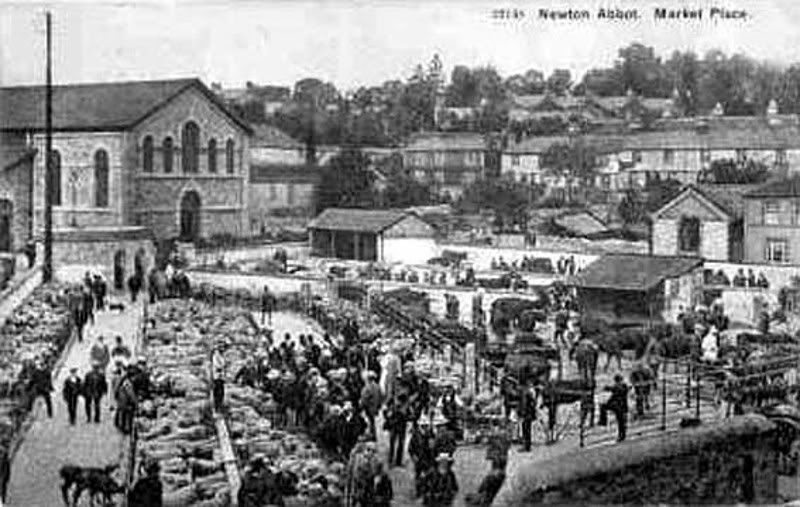
This one shows the market moved across the road and the new car park.
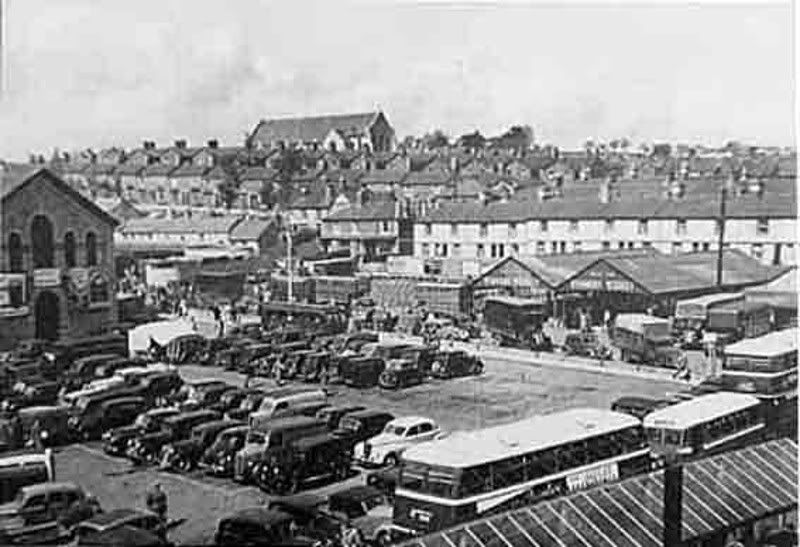
Two from the cattle market

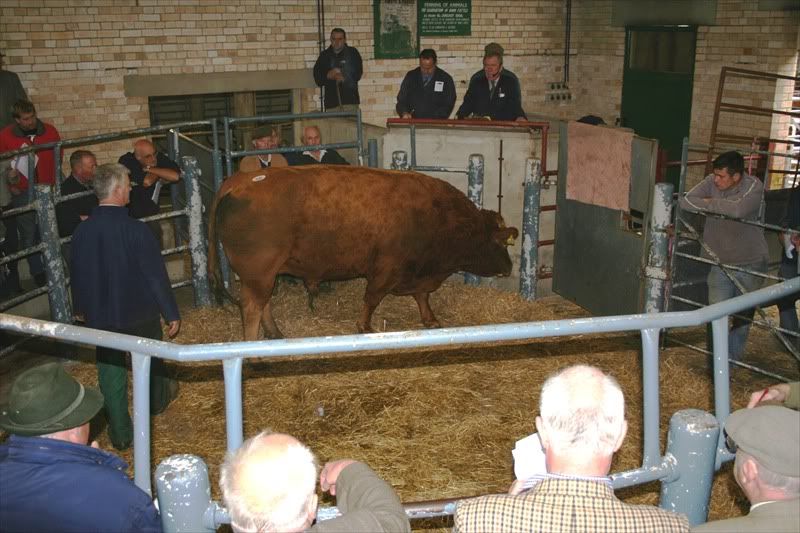
This one shows the pig and sheep market before the multi story car park was built over the top of it.
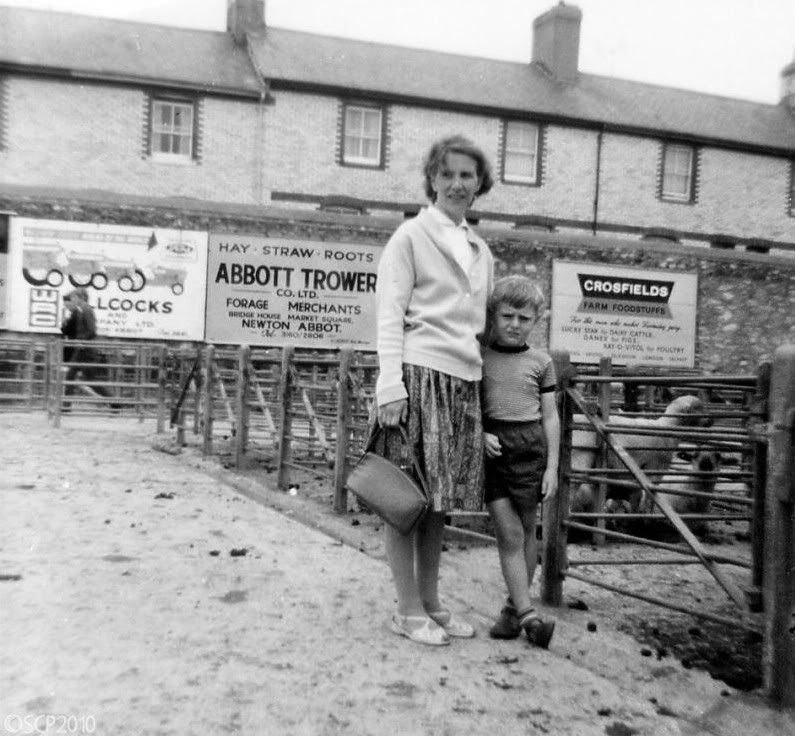
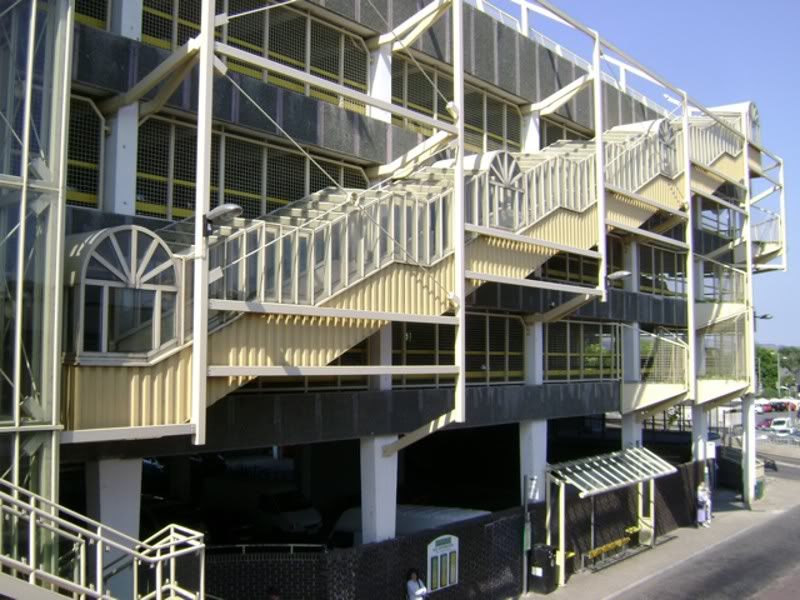
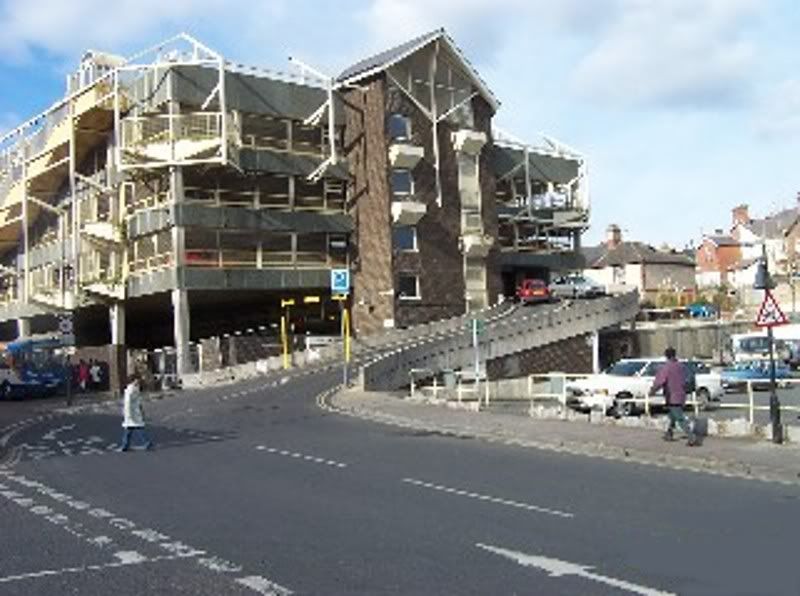
This one shows the old market buildings being knocked down.
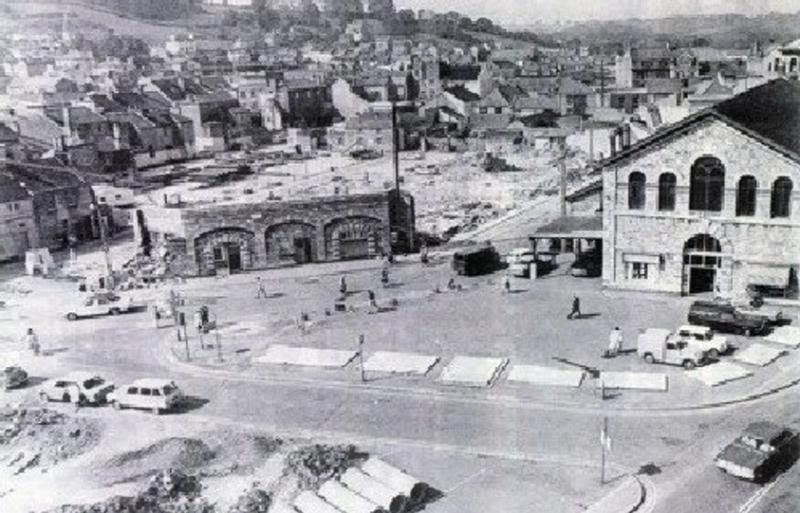
What was put in its place

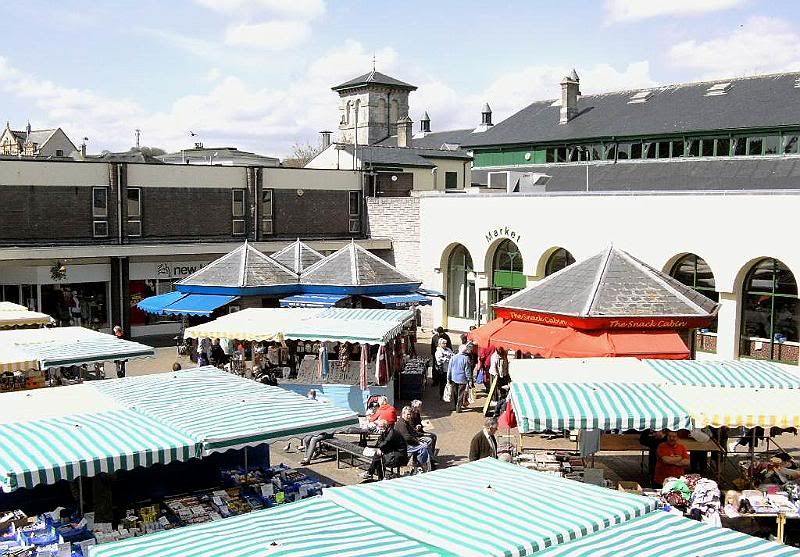
What the new market would look like


These are the wool mill buildings most of the firemen work at . The company was called Jhin Vicary and Son and closed down in 1972. The building on the left was a boiler room and when you waked past it you could look in and see the flames roaring away.
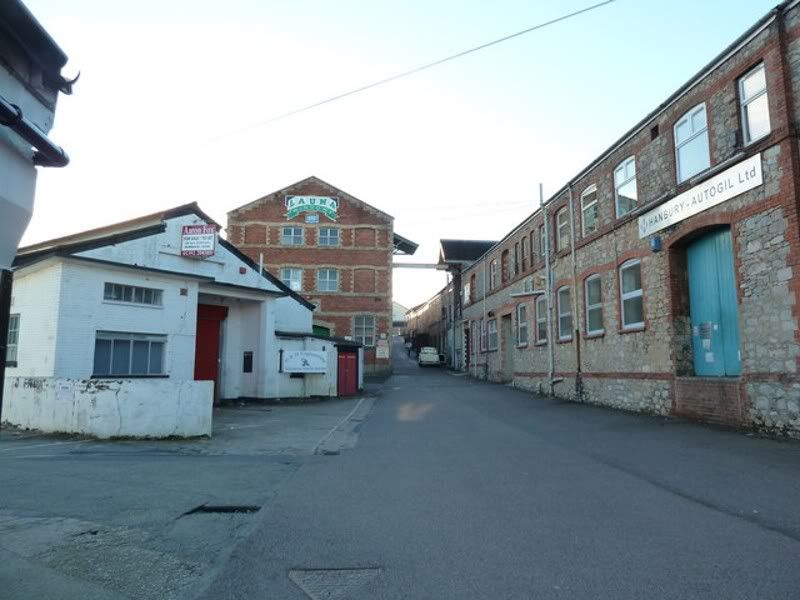
Below is a link that has nothing to do with this story, I was searching goggle looking to try and find out about the 1pm hooter and found this intersting to read story.
www.denburyjuniorleaders.com/filestore/17_Junior_Sqn_Sep-Dec_64.pdf
Going back the 1200’s the town was made up of two different settlements, divided by the river Lemon. On the south side to the river (known as Wolborough) was the one Manor called New Town of Abbots and on the north side (known as Highweek) Teignwick.
The New Town of the Abbots (of Torre Abbey) was given the right to hold a weekly market on Wednesdays sometime between 1247 and 1251.
By 1300 the two settlements were renamed as Newton Abbot (taking the low ground) and Newton Bushel (taking the high ground). On the strength of the market it quickly became a successful thriving town and a good source of income for the Abbots.
Over the river on the Highweek side another weekly market was created. This one ran on Tuesdays and because the Bushel family were the landowners this community became known as Newton Bushel. Over the next 200 years Newton Bushel ran more annual fairs, a number of mills were set up and the leather and wool trades started. Newton Bushel was also a convenient place for travellers to stay.
Torre Abbey was dissolved in 1539 and ownership of Wolborough was granted to John Gaverock who built himself a new house at Forde.
The twin markets of Newton Abbot and Newton Bushel continued until they were merged together in 1633 as a Wednesday weekly market under the ownership of Bradley Manor. By 1751 there was also a smaller Saturday market and three annual fairs – a cattle fair on June 24, a cheese and onion fair in September and a cloth fair on 6 November.
The markets continued to expand so in 1826 a new market was built. Over the next 50 years the buildings became dilapidated so a substantial new market was built in 1871. The buildings included a pannier market, a corn exchange and a public hall – the Alexandra (now a cinema). The river Lemon was also covered over. Further enlargement took place in 1938 as a new cattle market and corn exchange were built. The market was upgraded in the 1950's and the Sheep Market was rebuilt under the multi-storey car park in 1970.
What happened in 1978 is described by many Newton people as a redevelopment tragedy. The real old and much loved market area was flattened and in its place was build what you see there today and it looks the same as you will find in so many other towns in the UK, bland and boring and lacking the character the old market area had.
Now it seems the livestock market is no longer going to be a part of Newton Abbot anymore and I’ll come back to the reason that is likely to happen and what is planned to take its place in the town.
But first I want to tell you what the market area meant to me and so many others my age growing up in Newton Abbot. Market day was the biggest day of the week and the town would be full and alive all day long. It was the only day of the week the pubs were allowed to be open and they did a roaring trade thanks to all the farmers in the town for the livestock market.
During the school holidays we would go to the livestock market and spend all day getting the pigs and sheep out of their pens and driving them toward the back of the loading ramps on the Lorries. Such things would never be allowed these days with all the health and safety regulations. We never got paid for it and I’m not even sure why we did it, maybe it was just something we did as we lived in a market town and that’s what boys had done for generations. It sure was a mucky and sometimes even dangerous job to be doing, what I do know is I loved and enjoyed it so much.
I am talking pre 1970 before that monstrosity multi-story car park was built over the top of the pig and sheep market. When that was built it just hid the market away out of site and it never felt the same place after that as far as I was concerned.
The main reason I spent so much time in the market area was I was often sent to live at my aunties Win’s house that was in Sherborne Road. At the end of the market was a row of shops and houses stretching to the bus station end of Sherborne Road.
The first one was used as a café and I’m sure I read on here the upstairs was used for illegal gambling, next to that a singer sowing machine shop and I’m not sure if there was another shop next to that, or if it was just houses from that point.
There was no Bridge House back then and the River Lemon was open on that side behind a wall much like it still is now on the old bus station side where the river now comes out of the covert. My Aunties Win’s house had a very large cellar and I hated going down there and would do all I could to try and get out of having to go and fetch anything from it. Being so close to the river it had a major rat problem much the same as so many other buildings built beside the River Lemon.
Two cats lived down in the cellar and they were not the friendliest of cats I can tell you. I’m not sure why they were not the same sex as they were always breeding; maybe it was just so there was always a supply of cats to replace the older ones in time. The thing is most of those kittens never lived long enough to even open their eyes. Back in those days most people disposed of unwanted kittens by putting them in a sack and throwing them in the river at night. Very cruel and not something they would get away with doing today thankfully.
But to a young boy it all seemed normal and something I saw happen on a number of occasions, it was also normal to go over the market bath house once a week for a bath as well. So many houses back then never had a bath in the house and the pubic toilets in the market were also a public bath house. Having a bath only once a week was normal and even in houses that had built in baths, it was only ever filled up on a Sunday.
My earliest memories of the market area was that across the road from the pig and sheep market was a large open car park. On the right hand end was the pannier market building and on the left hand end the Black Cat Café. Every Newton person must have eaten or had a coffee in the old Black Cat, Is it still there today?
I remember being just eight years old and sat up at a table while my mum popped into the market to buy me a toy for being so good at the school dentist. GOOD? How did they ever get away with treating children the way they did back then at the school dentist?
Sat in the chair you were and then a clamp like device was put into your mouth to make sure you mouth stayed open as wide as it could go. Next came the dreaded thing they put over your nose that gassed you to sleep. You always woke up feeing to groggy and unwell, but hey at least it was all free back then unlike today.
At the bottom of the car park was the road that came in off the top of Queen Street and came out onto Sherbourne Road by the Alexandra cinema. There was number of permanent kiosks and one belonged to my grandfather George Best. I have no living memory of ever knowing my grandfather and guess he must have died before I was born. There was a great piece written about him in the Herald Express over ten years ago (cut it out but it’s gone missing) about how he was feared by the local footballers as he was a well known South Devon referee.
The article talked about how he would lock up his fish kiosk at Saturday lunchtime and head off for the game he was due to ref, he never look off his white shirt and black bow tie and just put on a pair of shorts and boots. But all the players never argued with any decision he ever made as not only was he so well respected, they all knew he would never stand any nonsense from them.
Across the road from these kiosks was the public bath and toilet building and just around the corner the building know as the new market hall. Inside this building was the famous chicken café and it was as popular as the black cat, at the end of this building was the old fire station.
No matter what part of the town you were in, when you heard the fire siren that was sounded over the whole of the town, you rushed to the fire station. Most of the fire fighters were retained ones and many worked up in the wool mill in Bradley Lane. It was fun to watch them all turning up at the station in a hurry and still getting their uniforms on as the engine started leaving the station.
You sure knew when they was a fire shout in Newton Abbot as the siren was always sounded, you also knew when it was 1pm as a hooter was sounded everyday at 1pm that could be heard no matter where you lived in Newton Abbot I can only guess it was sounded to let everyone know it was lunchtime, I don’t know when it was stopped.
The road through the market was closed off to traffic on market day and lots of stalls would be set up. We have talked before on here about the most famous Wednesday market trader a man called Mark. He always had loads of people standing by his van listening to all his chat; I myself loved standing there myself.
Back to the car park and once a year it was closed as it was the site the Anderson & Roland & Whitelegs fair set up for the week. The fair made that part of the town come alive even more when it was there. Such rides as the Noah’s Ark, dodgems, big wheel and the octopus and my all time fair favourite the boxing and wresting booth.
These were days when the fair had real showmen that gave it far more magic than today’s fairs have. OK the boxing and wresting in my view was mostly fixed and I knew that, but I still had to go inside and watch the fights whenever I could afford too.
I can close my eyes and still see the mans face who owned it, standing up on the front ringing his bell. On one side of him a boxer punching a punch ball hanging down in front of him and other the other side a wrestler going through some moves. I can still hear that distinctive horsey voice inviting you to take on one of his fighters.
Out of nowhere would come some man dressed in any army uniform shouting out and pointing which fighter he would take on. He always did his best to hid is face as much as possible to try and hide the marks on his face from other fights he had that day. Yes I suspect he was just a fair worker but still you had to pay your money and go and watch the fight.
What happened next happened every single time, he lost the fight and during the fight the real fair fighter cheated and fought dirty and broke the rules. “I was cheated and I want to take him on again” the army man would shout out and so everyone pilled back outside to the pay booth and paid to watch the rematch.
He would lose that one as well but would then get out of the ring and walk around everyone with his hat for people to put money into it for him. A few years later traffic was stopped from coming into the market road at the Queen Street end and a new road was made that divided the car park in two.
Then in 1978 most of the buildings on the left hand side were all knocked down and on the car park was built a super market. A new market square was created in front of the old market hall. In my view it was a big mistake and the old charm that was Newton Abbot Market was lost and in its place as I said, something that could be found in most other towns.
Someone didn’t like it to much and not long after it was built it so nearly could have been completely destroyed in an explosion. It was a Sunday morning and I was sitting on my front door step at my house at Bakers Park, when the ground shook and I heard the loudest bang I have ever heard in my life.
It was clear something had happened in the town and so I walked down to try and find out what had happened. I was allowed to only stand across the road at the top of Queen Street, but I could clearly see all the damage. There was a very strange feeling in the air that I had never felt before or since that day.
On the back corner of the new supermarket was a box with a gas meter in it fed by a plastic pipe. Someone cut the pipe and the gas all leaked out, it was said at the time it was a good job it blew up when it did, because if the gas had leaked for longer and built up inside the buildings, it would have been a massive explosion.
So back to the livestock market. The last time I went and looked at it was a number of years ago now. I was a bit shocked how run down it looked but more shocked by the lack of livestock there for sale. More empty pens than full ones in the pig and sheep section. It was no better in the second part of the livestock market where all the cows and sold on.
Sadly more and more local farmers have given Newton livestock market a miss and are going to the Exeter market where they are getting much better prices as there are far more buyers there.
The farmers have welcomed plans to build a new livestock market for the town out at Drumbridges beside the A38.I can fully understand why they support this project, but what will happen to the site they leave behind.?
The plans are to knock down the multi story car park and build on that site and also the cattle market site. I imagine all the buildings like the corn exchange will also be knocked down. In their place shops offices and houses.
I see what they are saying that there is nowhere else in the town where a new deployment could be built and if those plans go ahead, it will sure change Newton Abbot for good.
My own view is once the livestock market has gone; Newton Abbot will no longer be a market town. It will just be like any other town that has a market hall. Seven centuries of being a proper market town ended and once that happens it will never be reversed and Newton won’t be Newton Abbot anymore.
This picture must have been taken sometime before 1938 before the market was rebuilt as the pens etc are all built on what became the car park.

This one shows the market moved across the road and the new car park.

Two from the cattle market


This one shows the pig and sheep market before the multi story car park was built over the top of it.



This one shows the old market buildings being knocked down.

What was put in its place


What the new market would look like


These are the wool mill buildings most of the firemen work at . The company was called Jhin Vicary and Son and closed down in 1972. The building on the left was a boiler room and when you waked past it you could look in and see the flames roaring away.

Below is a link that has nothing to do with this story, I was searching goggle looking to try and find out about the 1pm hooter and found this intersting to read story.
www.denburyjuniorleaders.com/filestore/17_Junior_Sqn_Sep-Dec_64.pdf




